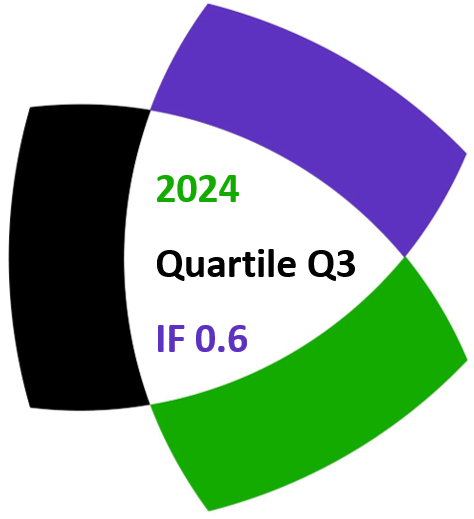J. V. Leyendekkers and A. G. Shannon
Notes on Number Theory and Discrete Mathematics, ISSN 1310–5132
Volume 21, 2015, Number 4, Pages 56–63
Full paper (PDF, 95 Kb)
Details
Authors and affiliations
J. V. Leyendekkers
Faculty of Science, The University of Sydney
NSW 2006, Australia
A. G. Shannon ![]()
![]()
Faculty of Engineering & IT, University of Technology, Sydney
NSW 2007, Australia
Campion College, PO Box 3052, Toongabbie East
NSW 2146, Australia
Abstract
The structure of the ‘Golden Ratio Family’ is consistent enough to permit the primality tests developed for φ5 to be applicable. Moreover, the factors of the composite numbers formed by a prime subscripted member of the sequence adhere to the same pattern as for φ5. Only restricted modular class structures allow prime subscripted members of the sequence to be a sum of squares. Furthermore, other properties of φ5 are found to apply to those other members with structural compatibility.
Keywords
- Modular rings
- Golden ratio
- Infinite series
- Binet formula
- Right-end-digits
- Fibonacci sequence
- Meta-Fibonacci sequences
AMS Classification
- 11B39
- 11B50
References
- Anatriello, G. & G. Vincenzi. (2014) Tribonacci-like Sequences and Generalized Pascal’s Pyramids. International Journal of Mathematical Education in Science and Technology. 45(8), 1220–1232.
- Havil, J. (2012) The Irrationals. Princeton and Oxford: Princeton University Press, pp. 5, 74.
- Leyendekkers, J. V. & A. G. Shannon (2013) Fibonacci and Lucas Primes. Notes on Number Theory and Discrete Mathematics. 19(2), 49–59.
- Leyendekkers, J. V. & A. G. Shannon (2013) The Pascal-Fibonacci Numbers. Notes on Number Theory and Discrete Mathematics. 19(3), 5–11.
- Leyendekkers, J. V. & A. G. Shannon (2014) Fibonacci Primes. Notes on Number Theory and Discrete Mathematics. 20(2), 6–9.
- Leyendekkers, J. V. & A. G. Shannon (2014) Fibonacci Numbers with Prime Subscripts: Digital Sums for Primes versus Composites. Notes on Number Theory and Discrete Mathematics. 20(3), 45–49.
- Leyendekkers, J. V. & A. G. Shannon (2014) Fibonacci Numbers as Prime Indicators. Notes on Number Theory and Discrete Mathematics. 20(4), 47–52.
- Leyendekkers, J. V. & A. G. Shannon (2015) The Structural Relationships between Fibonacci and Prime-generated Odd Number Sequences. Advanced Studies in Contemporary Mathematics. 25(1), 59–63.
- Leyendekkers, J. V. & A. G. Shannon (2015) The Golden Ratio Family and Generalized Fibonacci Numbers. Journal of Advances in Mathematics. 10(1), 3130–3137.
- Leyendekkers, J. V. & A. G. Shannon (2015) The Sum of Squares for Primes. Notes on Number Theory and Discrete Mathematics. 21(4), 17–21.
- Leyendekkers, J. V., A. G. Shannon & J. M. Rybak (2007) Pattern Recognition: Modular Rings and Integer Structure. North Sydney: Raffles KvB Monograph No. 9.
- Livio, Mo. (2002) The Golden Ratio. New York: Golden Books.
- Omey, E., & S. Van Gulck (2015) What are the last digits of…? International Journal of Mathematical Education in Science and Technology. 46(1), 147–155.
- Riesel, H. (1994) Prime Numbers and Computer Methods for Factorization. 2nd Edition – Progress in Mathematics 126. Boston: Birkhäuser.
- Vajda, S. (1989) Fibonacci & Lucas Numbers, and the Golden Section: Theory and Applications. Chichester: Ellis Horwood, Ch.XII.
- Whitford, A. K. (1977) Binet’s Formula Generalized. The Fibonacci Quarterly. 15(1), 21, 24, 29.
- Williams, H . C. (1998) Édouard Lucas and Primality Testing – Canadian Mathematical Society Monographs 22. New York: Wiley.
Related papers
Cite this paper
Leyendekkers, J. V., & Shannon, A. G. (2015). Primes within generalized Fibonacci sequences. Notes on Number Theory and Discrete Mathematics, 21(4), 56-63.


